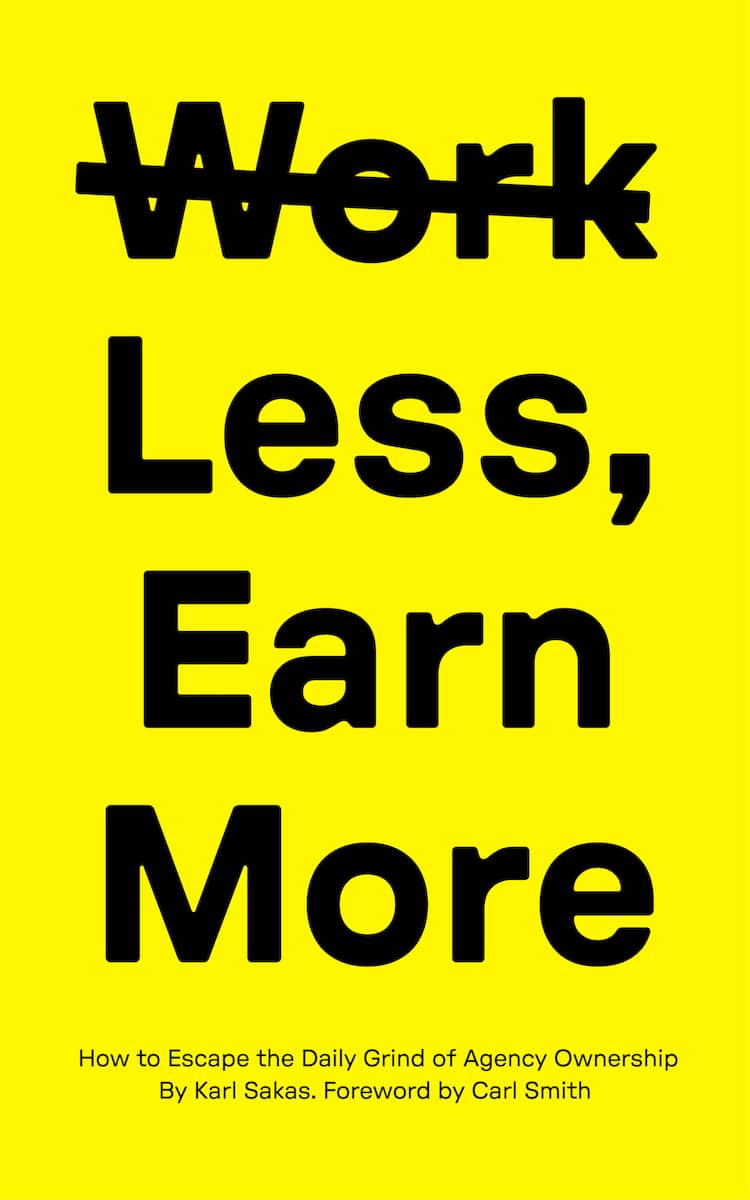When you run an agency, there’s no limit to demands on your time. Last week, I shared how you can create more free time by cutting admin work. Let’s dig deeper—what agency metrics should you track, and what are the right targets for each one?
My top 3 metrics for running a digital agency are Billable Ratio, Sales Backlog, and Employee Turnover—I call them the 3 Golden Agency Metrics.
These are strong indicators of your agency’s health—and they contribute to hitting a 20-30% net profit margin.
If you aren’t doing well on all three agency metrics, you’re likely facing cashflow problems, a disjointed team, restless clients, and a low (or negative) profit margin.
Billable Ratio — Golden Agency Metric #1
That is, what percentage of total agency time is billable to clients? If you have a high billable ratio, you’re selling work and you’re getting it done. You also aren’t carrying too many non-billable employees. How much should your Billable Ratio be?
Your Billable Ratio should be 60-65%. Increasing your billable ratio is the fastest way to increase profits, because you’re getting more revenue per employee without having to increase your payroll.
Getting your Billable Ratio to 60-65%
Not at 60-65% now? Set a target of increasing your Billable Ratio by 1-2% a month (by booking more work and completing it more efficiently).
Seems small, but there’s a huge multiplier effect across your entire team. And if you have no idea what your Billable Ratio is because you’re not tracking time at all now? Unless you’re seeing a healthy profit margin—please, please, please start tracking time immediately.
Sales Backlog — Golden Agency Metric #2
That is, how many months of work have you booked but not yet started? This is a sign of how well you’re positioned. Do clients seek you out, or are you chasing after every new sale?
The ideal is 2-3 months’ backlog at any time, but more’s better. If a client’s willing to wait longer, they see you as irreplaceable. Many agencies come to me with zero sales backlog (they don’t know where their next meal is coming from), or a negative backlog (they’re going hungry and it’s been like that for a while).
Getting your sales backlog to 1-2 months
Not there now? This isn’t a quick solution, but it’s an important one—a mix of accelerating your outbound sales and business development efforts, while upping your agency’s own marketing to get more inbound leads. Set regular targets for both activities to make progress.
Longer-term, this also requires specialization—it’s easier to build a sales backlog when your agency specializes in a particular client industry (or 2-3 industries, max).
Employee Turnover — Golden Agency Metric #3
That is, what percentage of your employees leave voluntarily each year? Don’t include firings (although if that’s high, you need to fix your recruiting problem).
The exact percentage depends on agency size, employee tenure, employee quality, and the norm in your geographic market. Turnover at big firms ranges from 30% annually to 40% annually—not surprising, since big agencies aren’t known for work-life balance.
At digital agencies like yours (under 100 people), you probably want 10-20% employee turnover annually.
- More than 20% and you’re constantly losing institutional knowledge, unless you’re primarily losing entry-level employees.
- Less than 10% employee turnover and there’s a high chance that people are stagnating (and potentially overpaid after years of automatic raises)
Getting your [voluntary] employee turnover to 10-20% annually
Like sales backlog, excessive employee turnover isn’t an overnight fix, either. The answer starts by figuring out why people are leaving. Common reasons include:
- Disorganization (which makes people frustrated… especially if it extends to forgetting bills or bouncing payroll)
- Bad clients (especially if you don’t back up your employees when clients are unreasonable)
- Limited advancement (which makes good employees leave to grow elsewhere)
- Poor employee accountability (strong performers won’t stick around if you consistently let others slack off)
There are plenty of other reasons good employees leave. Start by looking at yourself—Gallup research finds that “people join companies, but leave managers.”
And if turnover’s really low, make a list of your employees and ask yourself if you’d hire each of them today. For any “no” answers, you should plan to replace them.
Why are these the 3 Golden Agency Metrics?
There are many things you could track—profit margin, employee satisfaction, referrals by clients, client turnover, cash reserves, accounts receivable aging, and so on.
It’s easy to track a lot of metrics using the dashboards in accounting software like QuickBooks Online or agency management software like Workamajig—but when the data’s overwhelming, it’s easy to stop looking. And it’s also easy to look too closely at the other metrics—for instance, tracking agency-wide Profit Margin on a weekly basis is not helpful as a management decision-making tool (whereas Billable Ratio is somewhat more useful on that short horizon).
In the words of the Jeff Goldblum character in Jurassic Park: “your scientists were so preoccupied with whether or not they could that they didn’t stop to think if they should.”
The benefit of focusing at your digital agency
Focus on what’s most important—start with the 3 Golden Agency Metrics, because they encapsulate almost everything else about your agency’s health.
For instance, if you have a low Billable Ratio, you almost certainly have a low (or negative) profit margin. If your sales backlog is negative, you almost certainly have a low Billable Ratio. And if your Employee Turnover is higher than 20%, people aren’t staying long enough to learn your processes—which also makes it hard to keep long-term clients, since clients get antsy when their point of contact keeps changing.
Question: Which of the 3 Golden Agency Metrics are you going to improve first?


